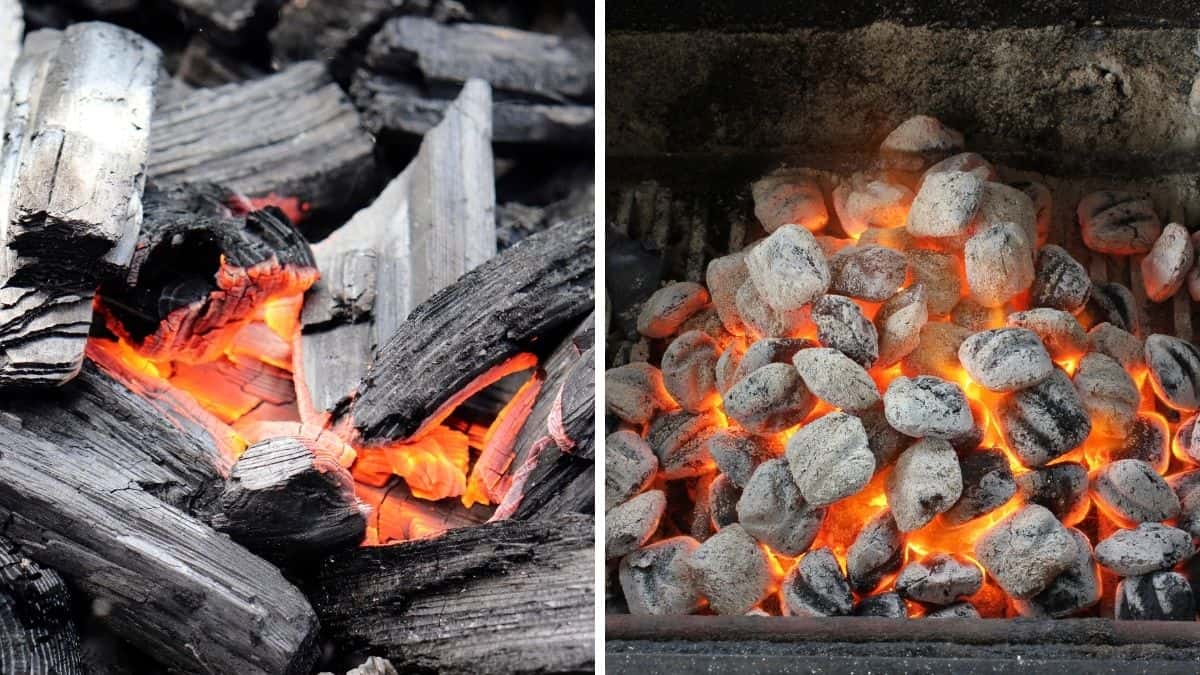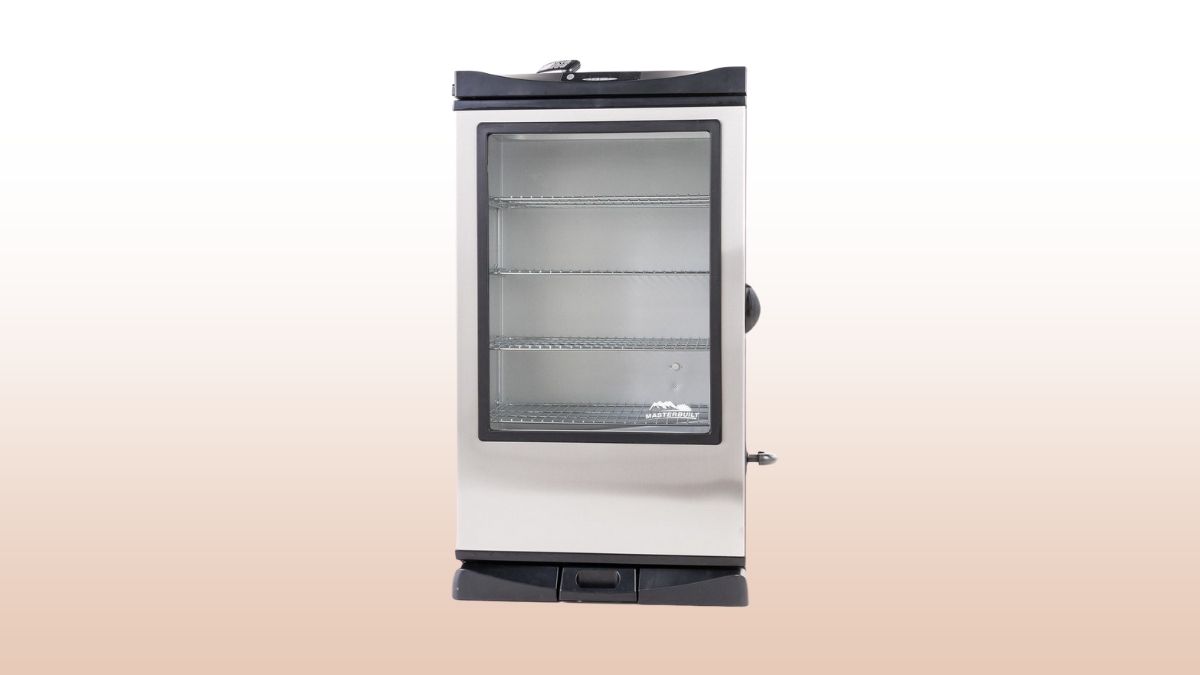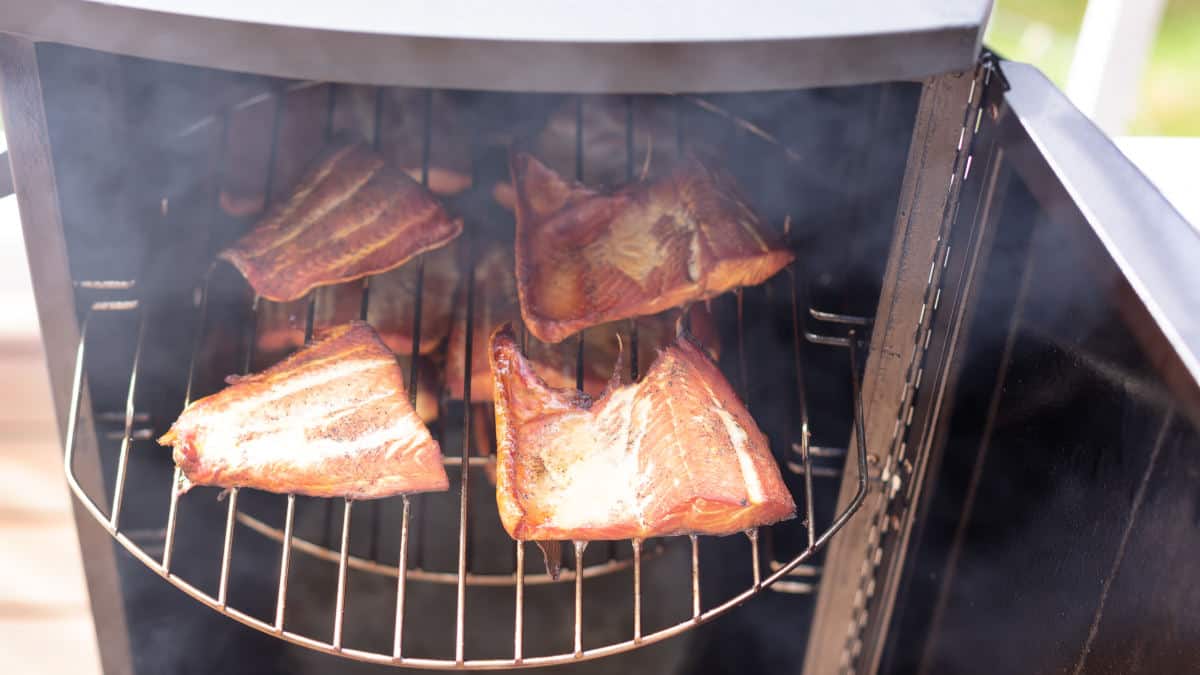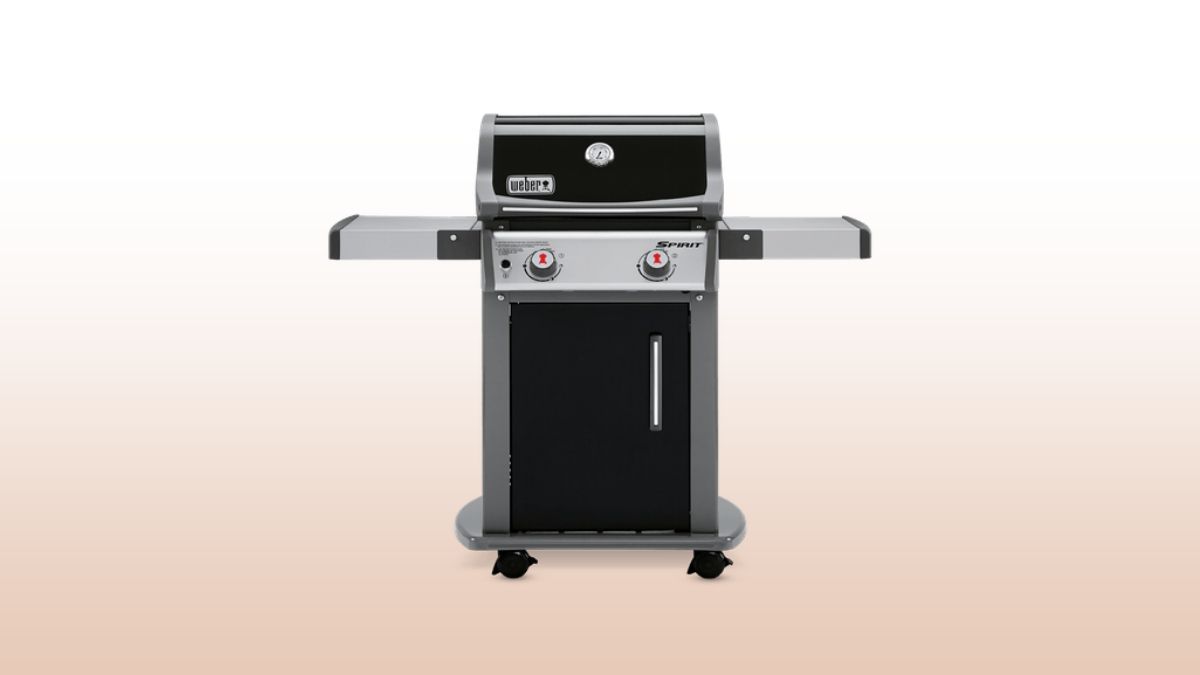Want to start a debate with your grilling mates? Ask them their opinion on lump charcoal vs briquettes — it’s sure to get heated.
Today, we’re setting the record straight as we distinguish the differences between lump and briquettes.
Charcoal is one of the best fuels for grilling as it burns cleaner and hotter for longer than dried wood. Filling your grill with dried wood is sure to leave you huffing and puffing after inhaling the chemical-filled smoke.
Lump and briquettes are both categorized as charcoal, but what is charcoal exactly?
Charcoal is essentially burnt wood with a high content of carbon. These burnt pieces of wood are sometimes left as they are (lump) or further processed to become briquettes.
So, which is better for grilling? Let’s take a closer look!
Before We Start – What Woods are Used for Both?
In the world of trees, there are two primary types: hardwood and softwood. The main difference between the two is whether they keep their leaves throughout the year.
Pine, cedar, spruce, and fir categorize as softwood — these will keep their leaves intact through the year. These trees contain high amounts of terpenes and saponins, chemical compounds used in different applications, such as soap and even foam-free fire extinguishers.
It shouldn’t be shocking when I say that grilling with softwood isn’t a good idea. The chemical compounds will impart an off-taste on your food, which can cause some people to become sick.
This is why charcoal is made of hardwood. Hardwood trees include; cherry, mesquite, pecan, apple, hickory, and oak.
Other Things Can Also Affect Flavor
The hardwood used in the charcoal will contribute to the flavor of your food. What’s more interesting is that how and where the tree grows plays a bigger role than the type.
Here’s a handful of the factors that affect the wood flavor; climate, geography, thickness of the bark, moisture content, drying time.
Purity and Charcoal Quality
When it comes to making charcoal, there are no international standards that manufacturers must adhere to. Therefore, you often have to put your trust in that they aren’t using treated wood.
In reality, a bag of lump charcoal can easily consist of more than one type of hardwood. The wood used to make charcoal depends on what’s available for the manufacturer. This is by no means bad as a blend of woods can create a unique flavor for your next meal.
You can often find some information about quality processes on the label or in a description online. This should indicate that you won’t find metal, rocks PVC, or other unwanted objects in your charcoal bag.
Briquettes Overview
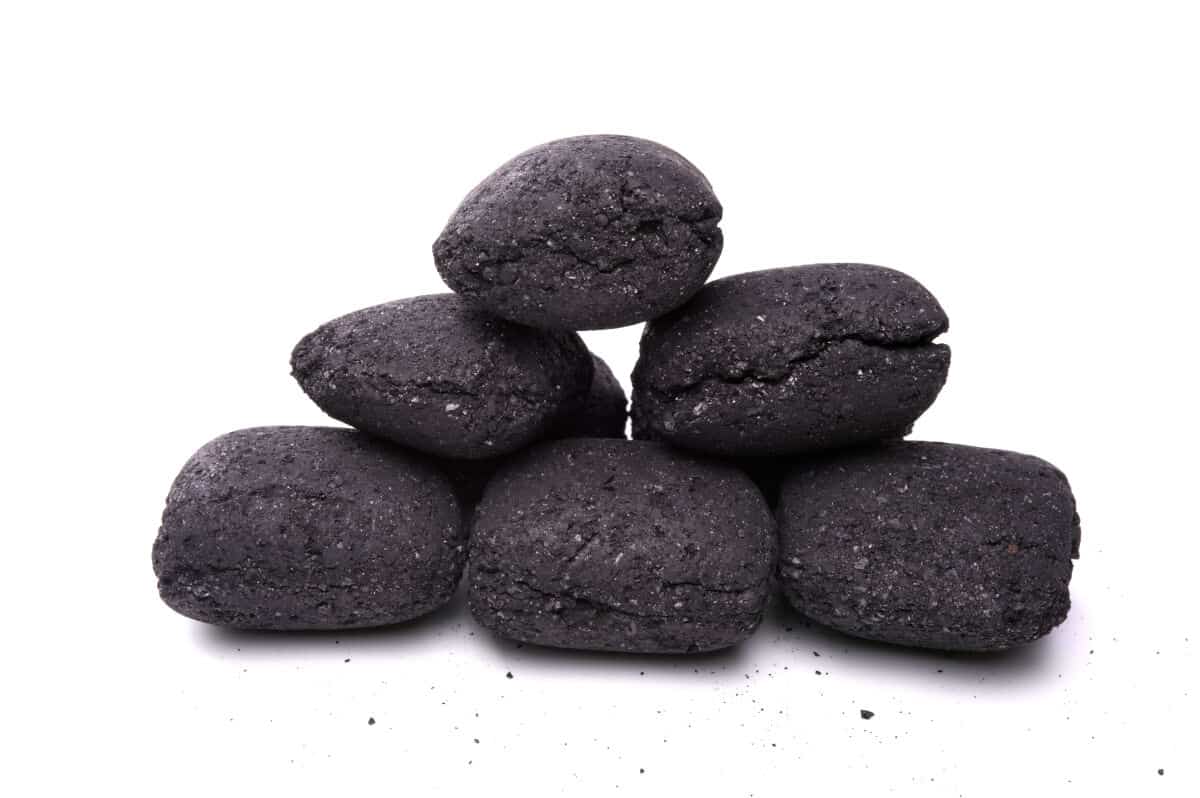
These little bundles of black gold are light, inexpensive, and perfectly uniform in size.
Additives are added to sawdust, mixed, and then pressed into molds — sort of like chicken nuggets in charcoal form, right?
Briquettes can’t burn as hot as lump charcoal and will often only reach temperatures between 800 and 1000 degrees Fahrenheit.
We have a guide to the best charcoal briquettes you can check out for more details and to see the top products available today.
What Are Briquettes Made Of?
The additives in briquettes are added to help make unmolding them easier — it also helps to make them light quicker, keep the shape and control their burn rate.
Traditional briquette additives include sodium nitrate, borax, and limestone.
Luckily, briquettes are becoming more and more natural. In today’s world, you can grab yourself a bag of natural briquettes made entirely of whole wood and nothing more than a binder, such as cornstarch.
These natural briquettes are also more affordable than the traditional chemical-filled bricks. They run at around $2 per pound.
If you’re a fan of everything DIY, you’ll be pleased to hear that you can, in fact, make your own briquettes.
All you have to do is mix biomass, such as straw, wood chips or corn husks, with sawdust and pour it into a mold, fire — and Abrakadabra! You’ll have homemade briquettes.
Benefits of Charcoal Briquettes
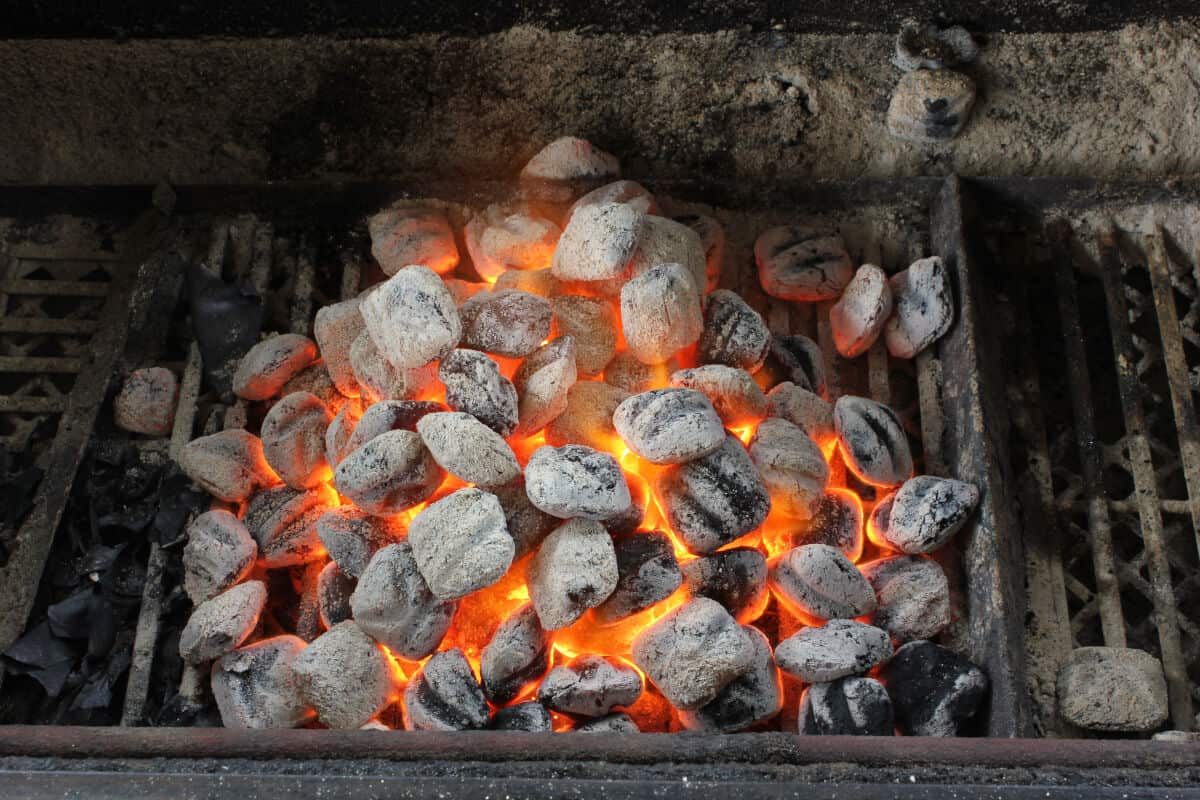
- Designed to burn at a lower temperature for longer, making them perfect for smoking.
- The uniform shape makes it easy to arrange them when using different methods like the snake or Minion.
- Lightweight.
- Affordable.
- Convenient.
Disadvantages
- Contains additives and possible allergens.
- Slower to light.
- Produces more ash.
Lump Charcoal Overview
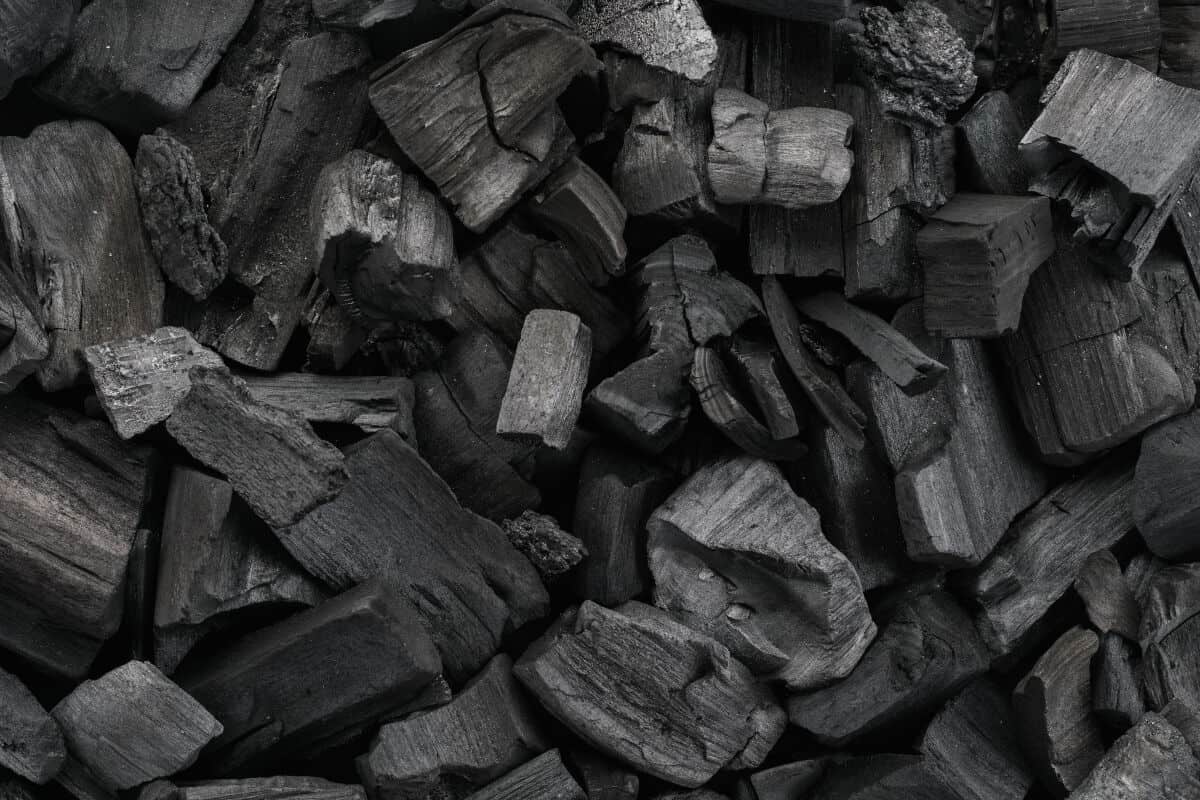
Lump is the most basic charcoal form, and it’s essentially what’s left after chunks of wood have been burnt through a carbonization process. What you’ll end up with is carbon.
The wood is burnt in an oxygen-free silo where sap, moisture, and other naturally-occurring chemicals, like methane, hydrogen, and more, are removed. This process is also known as charring, and you can still find charcoal labeled as char wood.
Making charcoal is a form of recycling since the wood that’s used is usually a by-product of coppicing and other scraps from mills and wood businesses.
Lump charcoal can burn at a scorching 1400 degrees Fahrenheit (760 degrees Celsius) or more — far higher than briquettes.
If interested, You can check out our guide to the most popular and best hardwood lump charcoals.
Benefits of Lump Charcoal
- Charcoal burns hot, making it ideal for searing, but you need to watch it carefully if you want to smoke low n slow style.
- It’s made to burn for an hour.
- Has a natural wooden smell that’s very addictive.
- Produces loads of smoke flavor.
Disadvantages
- Some pieces aren’t entirely carbonized. Larger pieces of lump can contain lignin and cellulose, two main components of wood. This increases flavor, but means the flavor can vary.
- Burns quick, so you’ll have to add more while grilling as necessary. The bags won’t last for long if you’re a regular griller.
- Uneven pieces that often vary between half to 4 inches. This can make it difficult to predict cooking times, and can cause inconsistent results.
- Pricier than briquettes.
- Can breaks easily into tiny, unusable pieces and dust. This dust will reduce airflow, giving you a slow-burning fire.
Lump Charcoal Use and Lighting Tips
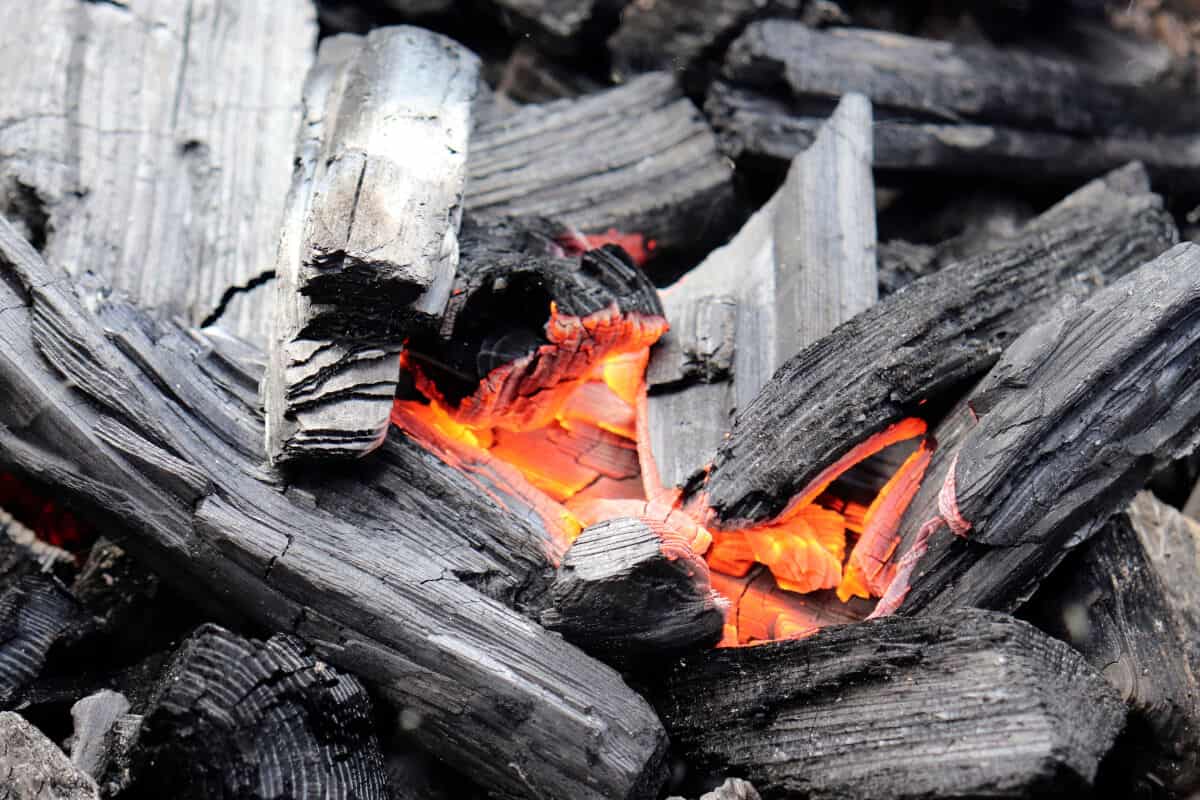
We recommend that you always reach for a bag of lump charcoal that’s all-natural. This means there are no added chemicals that could interfere with the taste of your food.
Natural charcoal can be lit using a firelighter, or you can use wood wool or organic starter cubes to get the fire going.
You can also pick one of our favorite starting methods: Looftlighter or charcoal chimney starter — your choice.
Then there’s self-lighting charcoal — and although these are super quick to light, we highly suggest that you avoid this route altogether.
Self-lighting charcoal is treated in chemicals that make them catch fire more easily. But, as you can imagine, as the charcoal burns, those chemicals, and their smell will rub off on your food.
The same goes for adding lighter fluid to the charcoal yourself to get the flames raging quicker — it’s a shortcut that really should be avoided.
Sure, you can allow the charcoal to burn for a moment or two to burn off the chemicals, but the chemical scent and flavor never seems to go away entirely.
Lump Charcoal Vs Briquettes – Misconceptions and Truths
Both lump and briquettes use wood from trees (of course, where else? Haha), are fired and burned in a low oxygen until they are close to pure carbon, can be chemical-free, and can be self-lighting.
Lump charcoal and briquettes burn in very different ways, which indicates how they should be used. However, there are a few myths that we’re ready to bust.
Many People Believe Lump Charcoal Burns Hotter?
Not entirely. How high a temperature the charcoal can reach depends on how it’s arranged in the grill.
Due to the irregular shapes of lump charcoal, they can puzzle themselves together and restrict airflow, which will reduce heat.
Airflow makes a HUGE Difference
Many grillers assume that because lump charcoals burn fast and hot, it’s best for quick cooks and searing, whereas briquettes burn slower at lower temperatures and are, therefore, best for smoking.
However, it’s oxygen that feeds the fire. Therefore, if there are excessive amounts of dust and lump bits blocking the vents and airflow, the heat will be reduced. With clever charcoal placement and tweaking of the air vents, you can easily use lump charcoal for low n slow cooking.
I choose to use locally-sourced lump hardwood charcoal for my low n slow sessions, so I can safely tell you that it’s certainly doable.
Burn and Cook Time
Briquettes are made to burn for hours, making them perfect for smoking methods like the snake, domino or Minion.
We often compare briquettes to crockpots — they’re simple and don’t need much maintenance. Simply add your ingredients, set it, go to work or take a nap; hours later, you have a whole-hearted meal.
On the other hand, lump charcoal is made to burn fast and hot for no more than an hour. This is excellent for direct grilling of sausages and burgers or when searing steak. But, lump charcoal can easily be used in indirect application as well.
Your effort is what makes the difference. With lump, you’ll have to add more as the fire is going, but briquettes are more set-it-and-forget-it.
Your Grill and Smoker Can Decide Which Type You Use
Because of the more affordable price and convenience of briquettes, these are often the most popular choice. But, it’s essential to consider your grill
Grills like kamado smokers don’t have as much space for ash, meaning they can quickly get overwhelmed as the briquettes turn to ashes. An excessive amount of ash in a kamado grill will block the airflow — resulting in a drop in temperature or even a dead fire.
Having said that, both types of charcoal can easily work in most smokers and grills, given that you use the charcoal correctly in your grill or smoker.
In general, a griller with a Weber Smokey Mountain and other charcoal grills will usually use briquettes, whereas kamados owners will grab a bag of lump instead.
Natural, Self-Lighting, Organic, Flavored – What’s it all Mean?
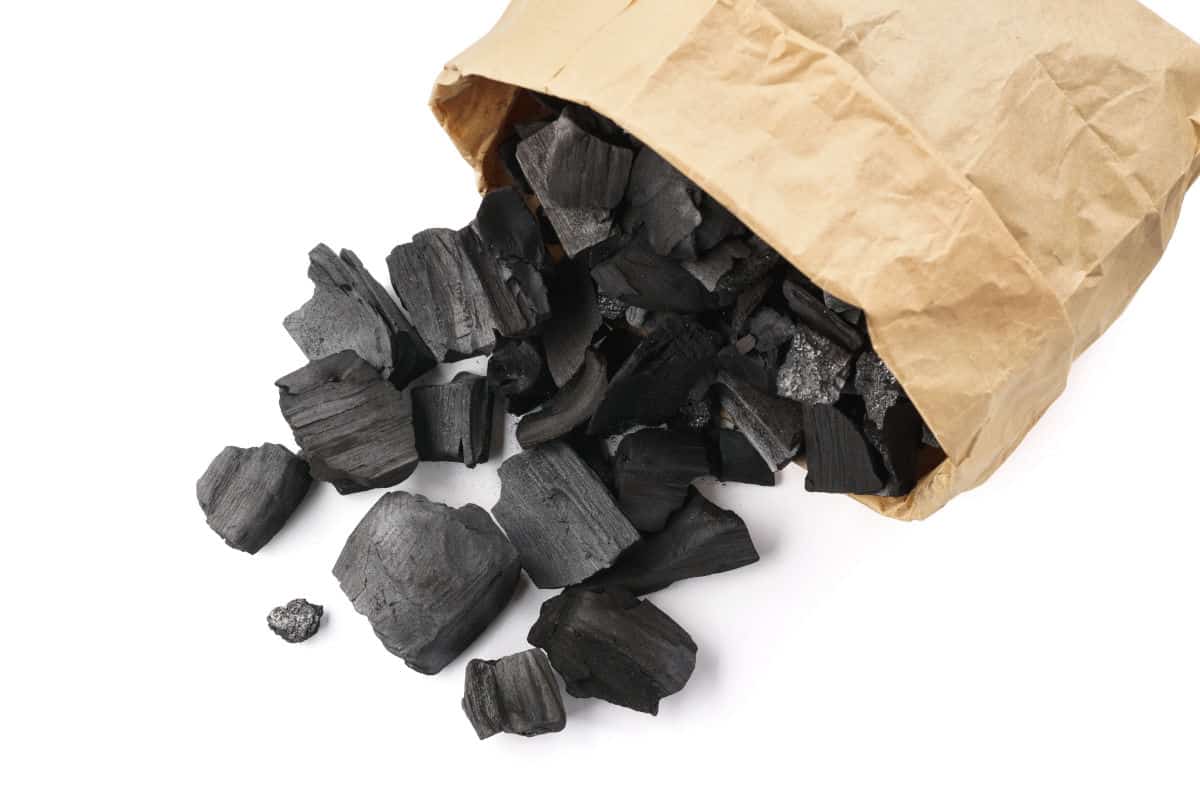
Overwhelming consumers with various labels seems to be something manufacturers take great joy in — but many of these labels say the same thing.
Here are common descriptions you’ll come across when shopping:
- All-natural, chemical-free briquettes
- 100% natural hardwood (redundant, I know)
- Flavored charcoal
- Self-igniting
- Organic lump wood charcoal
In general, anything labeled as “natural” will cost more.
Lump charcoal, which is pure wood, is as natural as anything gets. Prices for hardwood lump charcoal on Amazon can range between $1 to $2 per pound.
Briquettes Work Better at Higher Altitudes
Dedicated grillers won’t let a little rain, snow or wind deter them from grilling up a storm — pun intended. Luckily, less-than-ideal weather isn’t a match against a stack of burning lump coal in a grill.
Grillers living in high altitudes are facing all sorts of challenges every time they step in front of the grill. In high altitudes, the air is short on moisture, pressure and, most importantly, oxygen.
Meat consists of 75 percent water, so it’s a challenge to keep it from drying out. This is where you have to increase cooking time, but not the temperature, according to the USDA.
Briquettes might work better in low oxygen, high altitude environments as these conditions make the cooking process low and slow anyway.
Conclusion
Which charcoal you should choose depends on your cooking style and your grill type. In saying that, there are no set rules on when to use briquettes and when to use lump — go with what you feel works best for you and your grill.
Lump charcoal vs briquettes — which one do you usually go for? Let us know in the comments below.

